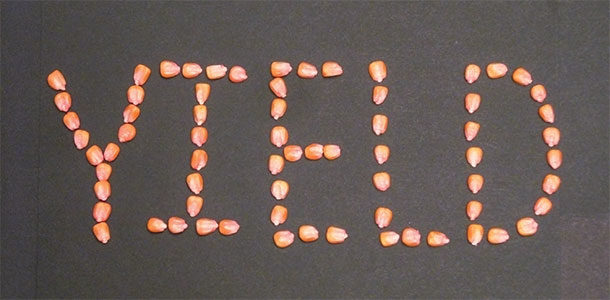Every producer has a different opinion based on his or her farm management practices, past experiences and a herd’s nutritional requirements. Fiber digestibility may be a top priority for one producer, while high starch and starch digestibility will be more important to another. One thing does remain a common denominator – high yield.
When evaluating corn hybrids for silage, one must consider both grain and forage yield. That means we must factor forage quality, or feed value, into the equation. Begin by selecting the corn hybrid that will respond best to the soil type in a given field.
Sometimes the corn hybrid product number that is selected for its strong agronomics may not be a silage-specific hybrid but rather a dual-purpose hybrid.
Planting the selected seed with strong agronomics and the trait package needed to fit individual conditions, as well as managing the crop to overcome as many yield-limited factors as possible, allows the hybrid to reach its genetic potential.
Using yield data, as well as placement tips from agronomists or seed specialists, can help farmers put hybrids in fields where they will be most responsive.
Online tools like product tech sheets and programs that provide detailed information about each hybrid also help better place hybrids by soil type. Yield data combined with soil maps allows producers to make even more informed decisions when designing and implementing a crop plan.
Consider the end use first
The first and most important question to answer when developing a crop plan and selecting seed is: What will be the end use of this crop? Knowing whether the corn will be used for ethanol, export, dry grain for livestock, corn silage, snaplage or food grade products makes a difference in hybrid selection.
Corn kernel attributes can vary greatly, and seed traits can affect the qualities of the end product. For instance, the availability of kernel starch and how it is digested is important for ethanol and livestock feed.
However, a softer-starch kernel may be preferable for export. When selecting corn hybrids for snaplage, look for excellent fall plant intactness plus a large ear and flared husk to facilitate a cleaner ear snap, reducing non-ear residue at harvest.
Some hybrids have better fiber digestibility than others. Bear in mind, however, that even though a particular hybrid has a great nutritional attribute, it may not work on your given soil type or have the desired trait package needed in a corn-on-corn situation.
Here’s a list of considerations when selecting seed for corn silage:
1. Soft starch, or very digestible grain, is found in silage-specific and select dual-purpose hybrids. Know if the hybrid is good for dairy corn silage.
2. Higher-starch corn silage tends to have more energy; know whether it’s digestible starch.
3. Fiber digestibility helps increase feed intake, which increases milk output.
4. Typical corn silage dry matter (DM) value is 8 to 10 percent protein, but some hybrids will have better plant and grain protein levels.
5. Look for a balance in agronomics, yield and forage quality. Soil health and nutrition are important drivers in forage yield and quality.
Corn silage as a feedstock is growing in recent years because it yields more tonnage and quality per acre versus other forages. Livestock farmers are focusing more on improving efficiencies and increasing return on investment by planting a higher tonnage forage crop.
Keep crop rotation top-of-mind
Crop rotation must also be considered when making seed selections. Planting corn on corn creates probable nutrient shortages as well as increased insect and disease pressure.
There are hybrids available with built-in genetic protection against corn rootworm that help maintain root mass, which is important since roots are the “water and nutrient super-highway to yield.”
Choosing a hybrid with traits, applying an insecticide or both is critical in situations with heavy corn rootworm pressure. Managing weeds and insects is key to protecting yield as well as protecting the effectiveness of traited products in future years.
To reduce susceptibility and to help avoid insect and disease resistance from developing, remember to rotate hybrid traits (modes of action) and manage residue.
Residue management also helps prevent disease transmission between seedlings and old residue. In addition, residue can play a role in nutrient management. Make a concerted effort to replace the amount of nutrients used to create a crop.
Remember: When corn is harvested for grain, organic matter is left in the field that doesn’t remain when the corn crop is harvested for silage or when corn stalks are baled.
Tillage management provides another variable in seed selection. Different hybrids are needed when planting conventional versus no-till or minimum-till situations. When planting in a no-till field, seedling strength and health are important.
No-till planters have evolved significantly, enabling a better-prepared seed bed and clearing residue away from direct plant growth zones. Hybrids with fast emergence in cooler soils and strong early disease tolerance are ideal for no-till environments. There is a great complement of seed treatments to assist in keeping plants strong in these conditions.
Minimize yield-limiting factors
Seed selection and crop rotation are just two of the factors that impact crop yield. Dr. Fred Below, professor of plant physiology at the University of Illinois, has seen up to 50-bushel differences between hybrids on the same field based on these seven primary factors:
- Weather
- Nitrogen
- Hybrid
- Previous crop
- Plant population
- Tillage
- Growth regulators
Achieving top yields on each acre for some growers begins with defining the production-limiting factors – like limited rainfall or sandy soils – and then selecting the hybrid most responsive to those limitations. Managing nutrients based on plant needs also can increase yield significantly.
University studies show a 30-bushel to 40-bushel difference between hybrids grown in the same field with the same production practices. Seed selection matters. The challenge is matching the unique characteristics of a farm’s environment with the desired results of the crop.
Ask your seed specialist to provide field data reflective of the environment in which you’re working. Then study that information before making a selection.
Consider experimenting on your own acres. The most meaningful data will come from tests conducted on your soil, with your management style and in a climate specific to you.
To make an apples-to-apples comparison between corn hybrids, whether they’re silage specific or dual-purpose hybrids, measure the grain-to-stover ratio.
It can be especially challenging to get accurate readings if you’re only testing one ear from one plant, but it’s important when you’re comparing hybrids against one another. Invest time designing a plan. Remember, the potential for next year’s crop begins when the seed is still in the bag. FG

- Corey Catt
- Forage Product Manager
- Latham Hi-Tech Seeds














